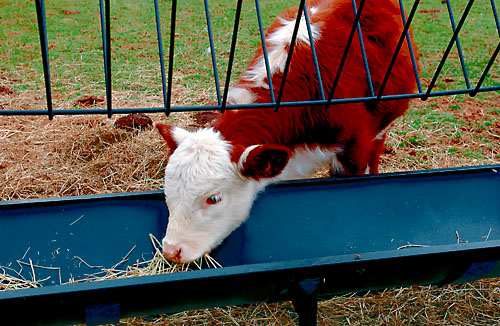

Peter’s Farm veal falls in this category.

Until 8 months, veal is light pink in colour. A calf remains a calf until one year of age - after which it is called a bovine. Our scientists are also finalising work on assessments covering the welfare of dairy cattle, and ducks, geese and quail. Their age is usually around 6 to 7 months. EFSA has already published assessments on the welfare of farmed pigs, broilers and laying hens and animals during transportation. The European Commission requested several scientific opinions from EFSA on the welfare of farmed animals in the framework of its Farm to Fork (F2F) strategy. A legislative proposal by the European Commission is expected in the second half of 2023. veal is the meat from young cattle aged 0 to 12 months. The assessment provides scientific advice to support the decision-making by legislators as part of the ongoing revision of the European Union’s animal welfare legislation. Our scientists assessed the husbandry systems used in the European Union for calves and identified hazards to which the animals are exposed and the associated consequences for their welfare. The supply of organic beef from young cattle is. All calves were slaughtered at 15 weeks of age. Only the first group consumed their total allowance. Friesian bull calves, in four groups of nine, were offered recon stituted whole milk at levels of 12, 15, and 18 of body weight and to appetite. Science-based advice to support legislators As a consequence, bull calves born in the organic dairy herds are sold for conven- tional fattening. characteristics of veal calves was examined. Animals that are fed early with grain-based diets and slaughtered at 12 to 14. With the decline in the veal market, the supply of Holstein bull calves for beef markets has increased. The start calves with an average age of 11 weeks are being fattened up by veal farmers by means of forage until they become so called fat calves. To improve their welfare, the young animals should be kept with the dam for a minimum of one day, although longer contact is recommended due to the welfare benefits for both calf and cow. Production of dairy beef, which depends almost entirely on Holstein bull calves, has become an important part of the overall supply of beef in the United States. Scientific evidence shows that calves with limited contact with their mother frequently suffer from isolation stress and an inability to suckle. High intakes of fibre are needed to cover rumination and iron requirements. Competent organisations in Member StatesĮFSA’s scientists said long-cut fibrous feed such as hay should be provided to calves from the age of two weeks onwards and gradually increased over time.


 0 kommentar(er)
0 kommentar(er)
